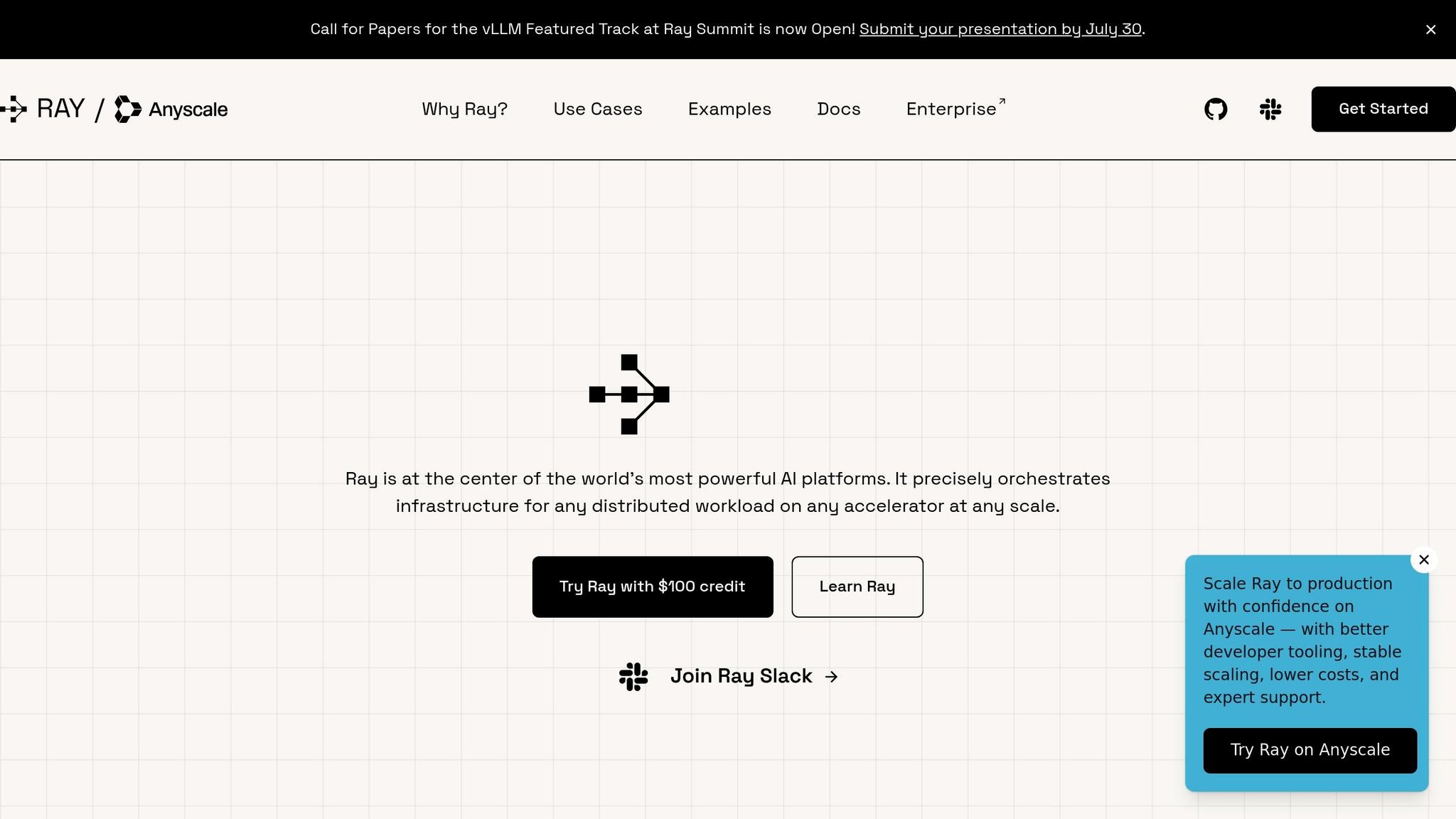
Batch processing is a cost-effective way to use large language models (LLMs). Instead of processing tasks one by one, you group multiple inputs into a single batch. This reduces API overhead, improves GPU usage, and can save up to 50% on costs with providers like OpenAI. It's ideal for tasks like data extraction, content generation, and analysis that don't require instant responses. Companies like First American and Scribd have already used batch processing to handle massive workloads efficiently, cutting costs while scaling operations.
Key Benefits of Batch Processing:
How to Get Started:
Batch processing isn’t just about saving money - it’s a smarter way to work with LLMs at scale.

Batch processing isn't just a technical strategy - it's a smart approach to saving money when working with large language models (LLMs). By grouping tasks together, you can cut costs in three key areas: reducing API call overhead, making better use of hardware, and taking advantage of special pricing models.
Every single API call comes with extra costs. These include things like network latency, authentication, and connection setup. When you're dealing with high volumes of data, those costs can stack up fast. Batch processing solves this by bundling multiple requests into one API call, eliminating much of that overhead.
Take this example: Instead of sending 1,000 separate API calls to process 1,000 tasks, you combine them into a single batch request. This approach slashes unnecessary costs tied to network and connection setup. In June 2025, Georgian, a data and AI engineer, showcased how OpenAI's Batch API could cut costs by 50% for support ticket classification tasks. By categorizing tickets into groups like billing, technical, or account access inquiries, batch processing significantly reduced expenses compared to handling each ticket individually.
Timing is everything when it comes to maximizing these savings. Most batch APIs work within a 24-hour processing window. Structuring your workflows around this timeframe ensures you get the most value out of batch processing.
Once you've minimized API call costs, the next step is to optimize GPU performance. GPUs are expensive, and underutilized GPUs mean wasted money. Batch processing helps by allowing GPUs to handle multiple tasks at the same time, reducing idle periods and increasing overall efficiency.
Here's the problem: Many companies use less than 15% of their GPU capacity on average. That means they're paying for resources that aren't fully utilized. Batch processing changes the game by keeping GPUs busier, which means you're getting more work done for the same cost.
"When you're using GPUs for model inference, you want the most performance per dollar possible. Understanding utilization is key for this - a high GPU utilization means fewer GPUs are needed to serve high-traffic workloads."
- Marius Killinger, Baseten Blog
Continuous batching takes this a step further. Unlike static batching, where the GPU waits for the slowest task in a batch to finish, continuous batching allows new tasks to start as soon as resources free up. This eliminates idle time and further improves GPU usage.
"Continuous batching improves GPU utilization over dynamic batching by eliminating the idle time waiting for the longest response of each batch to finish."
- Matt Howard, Baseten Blog
By squeezing more work out of your GPUs, you can significantly lower the cost of running high-traffic model endpoints.
Batch processing also has a big impact on pay-as-you-go pricing models. These models charge based on resource usage, so better efficiency directly translates into lower costs. For example, OpenAI's pricing on GPT-4 dropped from $36 to $5 per 1 million tokens between March 2023 and September 2024. By using batch requests, that cost can drop even further to $2.50 per 1 million tokens - a 50% additional savings.
Anthropic offers similar benefits with its Message Batches API, charging just 50% of standard API prices for batch requests. For a business processing 10 million tokens monthly, this could mean saving $25,000 annually.
Batch processing is particularly effective for tasks that don't require real-time responses, like data analysis or background workflows. By timing these tasks to fit within a batch API's processing window, you can unlock immediate savings without sacrificing functionality.
In short, batching isn't just about efficiency - it's a way to turn smarter resource use into measurable financial gains. When scaled across millions of requests, the savings add up fast.
Setting up batch processing involves a clear and systematic approach. The main challenge lies in choosing the right batching strategy and following the essential steps to implement it effectively.
When selecting a batching strategy, it's important to consider the type of workload you're handling:
Dynamic and continuous batching often strike the best balance between speed and efficiency for most applications. However, static batching works well when throughput is your top priority, particularly for offline tasks. Once you've chosen a strategy, follow these steps to implement it effectively.
Batch processing involves four main stages: data collection, preparation, execution, and monitoring.

To simplify and enhance batch processing, platforms like prompts.ai provide specialized tools designed for efficiency and cost control.
The platform includes features like tokenization tracking to monitor usage and optimize costs on a pay-as-you-go basis. It also supports workflows that integrate multiple language models, allowing you to connect different providers seamlessly and choose the most cost-effective model for each task.
prompts.ai automates repetitive tasks, such as data preparation, batch creation, and result collection, reducing human error and freeing up your team to focus on more strategic work. Additionally, its encrypted data protection ensures sensitive information stays secure throughout the entire process - from data collection to final results.
To get the most out of batch processing, start small, keep a close eye on your workflow, and gradually scale up as you refine and optimize your processes.
Building a strong technical foundation is essential for efficient batch processing at scale, especially when working with large language models (LLMs). Key challenges include managing GPU memory, optimizing computational performance, and ensuring workflows remain smooth and cost-effective.
GPU memory often becomes a bottleneck in batch processing for LLMs. The goal is to balance high throughput while avoiding memory overruns that could crash the system.
Modern GPUs can deliver memory bandwidths of 600–1,000+ GB/s, compared to DDR5's 50–100 GB/s. This stark difference highlights why keeping data in GPU memory is critical for performance. However, GPU memory is both limited and expensive, making efficient usage a priority.
Static memory allocation can waste up to 80% of GPU memory, while advanced methods like Paged Attention reduce this waste to under 4%. To make the most of GPU memory, consider these techniques:
Use profiling tools to determine the optimal batch size for your setup. Start small and gradually increase until you approach memory limits, then scale back slightly to maintain stability. Real-time monitoring can help detect and address issues before they escalate. These strategies not only improve memory efficiency but also enhance hardware utilization, aligning with cost-saving goals.
Mixed-precision inference combines different numerical precisions, like FP16 and INT8, to reduce memory usage and speed up computations - without sacrificing accuracy.
Using 8-bit precision can nearly halve GPU memory usage. For example, switching a 7B-parameter Llama model from FP16 to INT4 reduced its size by 4× (from 16 GB to 4 GB) while improving token generation speed with minimal quality loss. Research shows that 4-bit quantized models often perform as well as their FP16 versions across various tasks.
Mixed-precision inference can enhance generative AI model performance by 30% while doubling memory efficiency. Lowering matrix multiplication precision, compared to float32, can improve computational performance by 2.5× and cut memory requirements in half.
FP16 mixed-precision is a good starting point, offering near float16 speed with better predictive performance than float32. Often, this switch requires just a single code change. For maximum efficiency, combine quantization with other optimizations, like custom kernels and batch processing. Techniques such as GPTQ and Quantization-Aware Training help preserve accuracy even with aggressive quantization. These methods integrate seamlessly into batch workflows, further reducing costs and improving performance.
Continuous monitoring and proactive optimization are key to maintaining efficient and cost-effective batch processing workflows.
Focus on tracking token usage, GPU utilization, and processing times. Set automated alerts for breaches in predefined thresholds. Depending on the application, you may need real-time monitoring for critical tasks or periodic checks for batch jobs. Metrics like quality, relevance, sentiment, and security should also be monitored, with thresholds tailored to your use case.
Define clear escalation paths for alerts so the right team members can address issues quickly. Automation can streamline this process, reducing delays and human error. For U.S.-based deployments, tracking real-time costs alongside token usage and batch performance can help manage expenses effectively.
Tools like NVIDIA TensorRT-LLM and NVIDIA Triton Inference Server are excellent for optimizing and serving LLMs efficiently. Experiment tracking platforms, such as Neptune, can simplify resource monitoring and reveal additional areas for improvement.
Use real-time performance data and user feedback to fine-tune your serving infrastructure. Analyzing patterns in GPU utilization, memory use, and processing times can identify bottlenecks. Techniques like in-flight batching and speculative inference can further enhance performance. Keep in mind that DRAM bandwidth often limits performance in large-batch scenarios, with over half of attention computation cycles stalled due to memory access delays. Effective GPU memory management and mixed-precision inference play a crucial role in overcoming these challenges and keeping operations cost-efficient.
Batch processing isn't just about saving money - it’s also a game-changer for improving efficiency. By grouping requests, you can significantly reduce costs while boosting throughput, making it a smart move for handling large-scale data tasks.
Adopting batch processing can lead to substantial cost reductions and performance gains. For example:
Batch processing also spreads the memory costs of models across multiple operations, reducing resource usage and minimizing manual effort. Automation further decreases the need for hands-on management, lowering labor costs and ensuring tasks run smoothly and consistently.
A real-world example highlights the impact: an enterprise handling large document sets with batch inference achieved 2.9× lower costs compared to real-time inference on AWS Bedrock. For inputs with shared prefixes, the savings jumped to 6×.
These benefits make batch processing a practical and efficient approach for many organizations.
Ready to implement batch processing? Here’s how to get started:
For streamlined implementation, platforms like prompts.ai offer tools to simplify the process. With a pay-as-you-go model, prompts.ai connects LLMs seamlessly, tracks token usage to control costs, and provides features like real-time collaboration, automated reporting, and multi-modal workflows. By keeping your prompts concise and clear and setting up robust monitoring systems, you can refine your strategy over time for maximum efficiency and savings.
With the LLM market projected to grow to $36.1 billion by 2030 at a 33.2% CAGR, adopting batch processing now can help your organization stay competitive while keeping costs under control.
Batch processing helps cut down API costs by bundling multiple requests into one call. This approach decreases the number of individual requests sent, reducing setup overhead and making resource usage more efficient.
By simplifying operations, batch processing does more than save money - it also lowers latency, delivering faster and more consistent performance for applications using large language models. It's particularly useful for handling high-volume tasks, where efficient resource management can lead to noticeable cost savings and improved scalability.
When it comes to batching strategies, each approach serves a specific purpose based on workload requirements:
To decide which strategy fits your needs, think about your workload. Go with static batching for steady, consistent tasks, dynamic batching for variable or unpredictable scenarios, and continuous batching when real-time responsiveness is essential.
To make the most of GPU memory during batch processing, begin by fine-tuning the batch size. The goal is to strike a balance between performance and memory consumption. Techniques like model pruning and quantization can help reduce memory usage while maintaining accuracy. Another smart move is to adopt mixed precision training, which allows for more efficient memory allocation and better GPU utilization.
Keeping an eye on GPU usage is equally important. Regular monitoring helps prevent out-of-memory errors and ensures smooth operation. Adjust settings as necessary to match the workload. Remember, GPU hardware varies - factors like VRAM capacity can significantly impact your strategy. Tailor your approach to suit the specific GPU you're working with for optimal results.


